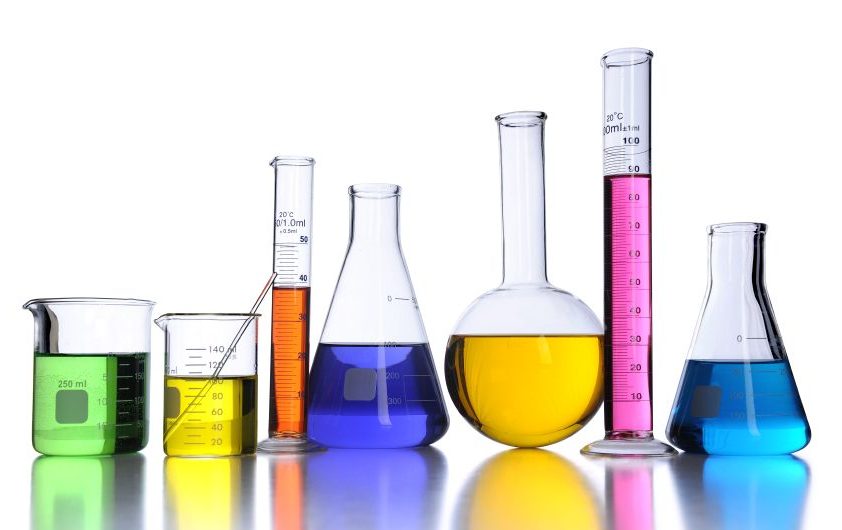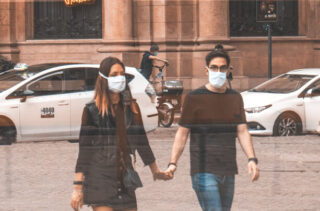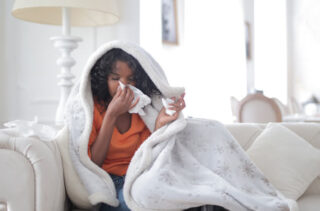Chemicals are every where we turn!
It is difficult to avoid them! Chemicals in food, cookware, personal care products and cleaning supplies are the hardest to avoid because we need to eat, cook, and take care of our body and clean.
Where can we find chemicals?
Cookware: Plastic water bottles, aluminum pans, Teflon pans, saran wrap, aluminum foil, plastic storage containers.
Food: MSG, mercury, fluoride, pesticides, fungicides, fertilizer, preservatives, food additives, artificial sweeteners, food dyes, and hydrogenated oils.
Cleaning Supplies: Scented detergents, soaps, bleach, spot remover, carpet cleaners, fabric softeners, and household cleaners.
Home: Most inexpensive furniture is constructed with particle board. Particle board emits toxic vapors such as formaldehyde, a known cancer-causing agent. New carpets, mattresses, pillow, new paint, and air fresheners all contribute to toxins in the air.
Clothes: Nylon, polyester, acrylics, spandex, and dry-cleaning chemicals.
Personal Care Products: Our skin is the largest organ in the body. While it offers protection from microorganisms such as germs; skin is also permeable, allowing environmental toxins to penetrate. Personal care products are the largest source of toxic absorption through the skin. Perfume, cologne, shaving cream, skin lotions, aftershave, toothpaste, soaps, shampoos, deodorants, nail polish, sunscreens, fluoridated tap water, hair dyes, hair spray, lipsticks, cosmetics, antibacterial lotions and soaps.
Hair Dyes (see “Dying to Look Good” by Christina Hoza Farlow, DC)
Here are some facts from “Shades of Risk” – by Shelley Page:
- The January/February 2005 issue of Public Health reports that the use of permanent hair dye is one of the largest factors among men and women, that can increase the risk of developing bladder cancer by up to 50%.
- In 2004, a study by Yale researcher, Tong Zhang found that long-term use of permanent hair dye in dark colors doubles a person’s risk of non-Hodgkin’s lymphoma.
- In 2004, the Environmental Working Group stated that “70% of all products contain ingredients that can be contaminated with impurities linked to cancer and other health problems.”
Antibacterial Soaps: These soaps must be eliminated. They are just as dangerous as antibiotics because they kill both good and bad bacteria. When good bacteria are destroyed it leaves the body more susceptible to illness from harmful bacteria. Children must avoid antibacterial soaps because it is healthy for children to come into contact with germs. This exposure is what helps build the immune system.
Children using antibiotics and antibacterial soaps develop allergies and asthma. The Center for Disease Control (CDC) states that washing your hands with ordinary soap and water is sufficient.
Why we need to avoid them
Chemicals cause inflammation, increase heavy metal toxicity, interfere with every system including respiratory, digestive, circulatory, and endocrine. For example, when chemicals interfere with our endocrine system, they shift our hormone balance making us feel horrible. Unfortunately, many of us will go to the doctor and have lots of blood tests to find out nothing is wrong. Too often, the culprit is a build up of chemicals in the body, disrupting the systems.
Chemicals to watch for
Xenoestrogens: These chemicals are endocrine disruptors. They mimic estrogen in your body and have been linked to:
- Early puberty
- Breast cancer
- Vaginal and cervical cancer
- Endometriosis
- Decreased sperm count
- Testicular cancer
- Prostate cancer and BPH
Other Xenoestrogens:
- Octyl Methoyxcinnamate
- Octyl Dimethyl PABA
- Benzophenone-3
- Homosalate
- 4-Methylbenzylidene Camphor (4-MBC)
- Butylated Hydroxytoluene (BHT)
- BHA, EDTA
- Cresol, Glycols, Nitrates
- Sodium Lauryl Sulfate (SLS)
- Sodium Laureth Sulfate (SLES)
Parabens: These chemicals are endocrine disruptors. They mimic estrogen in your body and have been linked to:
- Butylparaben
- Ethylparaben
- Methylparaben
- Propylparaben
Synthetic Ingredients to Avoid:
- Methyl, Propyl, Butyl, Ethyl Parabens
- Diethanolamine (DEA) Triethanolamine (TEA)
- Diazolidinyl Urea, Imidazolidinyl Urea (Germall II and Germall 115)
- Sodium Lauryl Sulfate, Sodium Laureth Sulfate
- Petrolatum (petroleum jelly)
- Propylene Glycol (PPG or PEG)
- PVP/VA Copolymer
- Stearalkonium Chloride
- Synthetic Colors (FD&C or D&C)
- Synthetic Fragrances
- BPA, plastic water bottles and containers
Learn to Detox from Chemicals and Heavy Metals
Come in or give us a call! We can show you how to do it the natural way.




